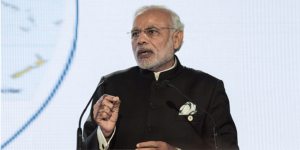
The growth of the food services industry in India is likely to be propelled by the adoption of the ‘house of brands’ strategy, helping food tech firms scale and grow sustainably, according to a report by Redseer Strategy Consultants.
The model refers to the practice of owning multiple brands under one umbrella. In the food services industry, the model was pioneered by early players such as Curefoods, Rebel Foods, and EatClub, owning diverse cuisines under one roof.
Redseer’s report termed the strategy “effective” as it demonstrates average revenue at least five times more than standalone food brands.
Successful house of brands players possess the ability to scale multiple brands across cuisines, increasing the revenue potential, compared to individual brands. Moreover, the model assures operational efficiency by optimising operational and capital expenditure over time, the report said.
Other distinct advantages include measured geographical expansion and a stronger consumer funnel, as per the report.
“The Indian food market will need a lot more of mid-sized brands than fewer mega brands owing to the diversity it brings. House of brands playbook has been successful in this context. It is particularly heartening to witness the new-age homegrown house of brands leading the charge by building multiple sizeable brands already,” said Rohan Agarwal, Partner at Redseer.
The roll-up approach provides access to a larger total addressable market across cuisines and meal slots and leads to increased kitchen utilisation. It enables better operating leverage such as lower cost of goods sold, further solidifying the competitive advantage in the market, the report noted.
The strategy consulting firm expects the country’s food services industry to surpass the $100-billion mark by 2028, growing at a CAGR of 8-10%. The organised section of the industry is likely to outpace the unorganised part by nearly three times, it said.
.thumbnailWrapper
width:6.62rem !important;
.alsoReadTitleImage
min-width: 81px !important;
min-height: 81px !important;
.alsoReadMainTitleText
font-size: 14px !important;
line-height: 20px !important;
.alsoReadHeadText
font-size: 24px !important;
line-height: 20px !important;

The habit of eating at restaurants is popular in the metro cities; the frequency of eating outside has gone up up by 30% for students and young adults and 20% for mid-lifers in 2023 compared to 2018, according to Redseer.
Users are increasingly looking for more variety and are wary of quality, thereby driving the need for brands in the ecosystem. Brands are also leveraging the opportunity and scaling their presence in the Indian market. This is expected to drive the organised food services market from $30 billion to $60 billion by 2028, the report pointed out.
Edited by Affirunisa Kankudti










